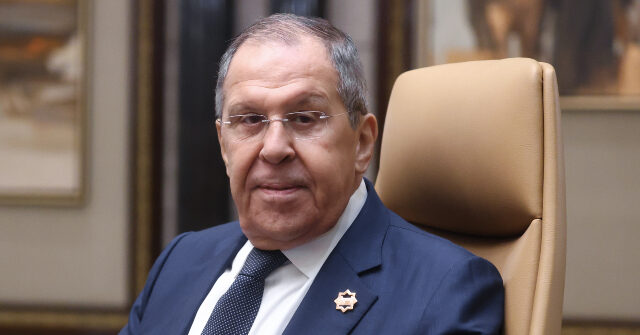Exploring the Dynamics of Frozen Russian Assets Post-Ukraine Invasion
Introduction: The Context of Frozen Assets
The issue of frozen Russian assets has emerged as a significant point of discussion in the geopolitical landscape following Russia’s invasion of Ukraine in 2022. The United States and European nations collectively froze between $300 to $350 billion in Russian assets, predominantly in the form of government bonds. This action was a response to the conflict, aiming to economically pressure Russia. The handling of these assets has become a complex matter, involving strategic negotiations and potential repercussions on the global economy. This summary delves into the key perspectives and developments surrounding this issue, highlighting the roles of prominent figures and the implications for international relations.
Lavrov’s Response: Acknowledgment and Caution
Russian Foreign Minister Sergey Lavrov recently acknowledged comments made by U.S. Secretary of State Marco Rubio regarding the frozen assets, appreciating the "healthy thoughts" expressed. During a press conference in Doha, Lavrov noted Rubio’s suggestion to consider these assets as part of a broader negotiation strategy for resetting U.S.-Russia relations post-conflict. However, Lavrov emphasized that concrete discussions among European governments were yet to materialize, underscoring the natural and inevitable nature of such conversations, especially considering American understanding of the issue. His remarks reflected a cautious optimism, recognizing the potential for dialogue while highlighting the need for a balanced approach that addresses both Russian and American interests.
Rubio’s Role: A Strategic Perspective
Marco Rubio’s interview with Breitbart News brought attention to the potential use of frozen assets as a tool for future negotiations. He suggested that these assets could be part of a comprehensive dialogue aimed at normalizing relations once the conflict in Ukraine concludes. Rubio emphasized the importance of a ceasefire as a precursor to any negotiations, highlighting the interconnectedness of geopolitical and economic strategies. His comments were measured, avoiding speculative scenarios, and focused on the practical steps needed to address the multifaceted issues at hand.
The Frozen Assets Dilemma: Economic and Political Implications
The freezing of Russian assets presents a complex web of economic and political considerations. The majority of these assets are under European control, leading to discussions about leveraging them to support Ukraine. Proposals have ranged from seizing the assets outright to using them for reconstruction efforts. However, there is a divide within the European Union, with Eastern European countries eager to assist Ukraine immediately, while major economies like Germany, France, and Italy express reservations. These nations are wary of the potential destabilization of the international financial system, reflecting a broader tension between immediate punitive measures and long-term economic stability.
Europe’s Divided Stance: Balancing Interests and Risks
The European Union faces internal divisions regarding the frozen assets, with different member states holding varying viewpoints. Eastern European nations, witnessing a shift in U.S. priorities under President Trump, are eager to allocate the funds to Ukraine. Conversely, major EU members are cautious, recognizing the risks of broader financial instability. The European Commission’s plan to establish an International Claims Commission to assess damages and determine the allocation of Russian assets aims to provide a structured approach, balancing legal and financial considerations. This initiative seeks to address the complexities of compensating for damages while avoiding hasty decisions that could undermine investor confidence.
Russia’s Reaction: Resistance and Retaliation
Russia’s stance on the frozen assets is one of strong opposition, with officials labeling the seizures as "thieves’ methods" and "simply robbery." The transfer of $20 billion to Ukraine was met with threats of retaliation, including the seizure of Western assets in Russia. This reaction underscores the deep mistrust and animosity in current international relations. Moscow’s willingness to consider the use of its frozen assets for reconstruction in Ukraine is contingent on proportional investment in regions under Russian control. This posture reflects a strategic approach, aiming to protect national interests while leaving room for negotiated solutions.
Conclusion: The Path Forward
The issue of frozen Russian assets is intricately tied to the resolution of the Ukraine conflict and the resetting of international relations. While there are opportunities for dialogue and cooperation, significant challenges remain, including political will, legal frameworks, and economic stability. The path forward requires a delicate balance of punitive measures and constructive engagement, with all parties recognizing the need for mutual gains. As global dynamics evolve, the handling of these assets will be a critical test of international diplomacy and cooperation.


